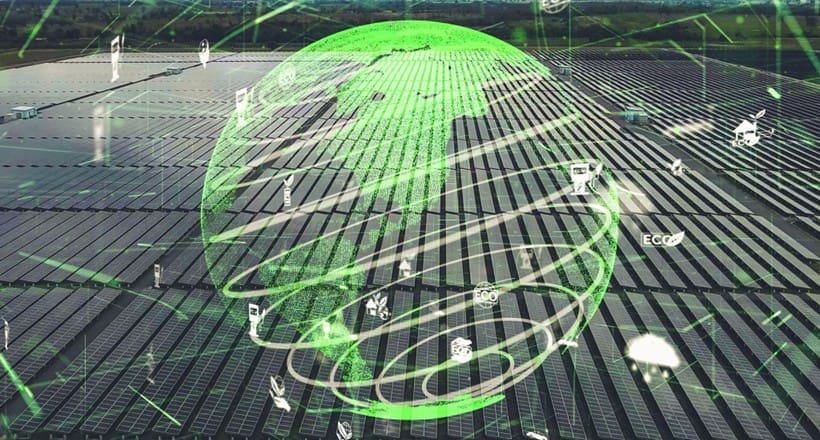The energy sector powers everything, from homes and hospitals to factories and transport. It makes up nearly a tenth of the world’s economy and connects every country through vast, global networks of fuel, electricity, and infrastructure. But with all its size and complexity comes vulnerability. Long pipelines, remote solar fields, and aging power lines are hard to monitor, especially in harsh environments or during extreme weather.
New technology is changing the equation. Tools like Sentinel maps and satellite imagery data give energy companies the comprehensive view they’ve long needed. These tools help detect threats like overgrown vegetation, soil movement, or unauthorized activity near critical assets. And because updates come regularly, companies can act faster, avoid downtime, and plan smarter. In a sector where small delays can lead to big costs, having reliable data from space becomes an industry standard.
Key Challenges In The Energy Sector
The energy sector relies on large, complex systems that stretch across wide and often remote areas. Keeping these systems running smoothly requires constant monitoring, but traditional inspections take time, cost a lot, and still miss hidden risks. Problems often build up quietly: a pipeline weakens underground, a power line is blocked by trees, or solar panels get covered in dust or ash after a wildfire. These issues often lead to service failures, high repair costs, or even safety threats.
The key challenges in the energy sector are:
- Asset tracking over large distances. Long-distance power lines, pipelines, and solar farms are often hard to inspect.
- Growing weather risks. Storms, fires, and floods increase wear and damage to assets, especially in rural or forested zones.
- Vegetation management. Trees and plants growing too close to power lines are a top cause of outages, especially in dry seasons.
- Land use conflicts. Without up-to-date maps, it’s hard to detect encroachment, illegal construction, or nearby agricultural activity.
- Outdated or missing ground data. In fast-changing areas, field reports are often delayed or unavailable.
- Detecting human activity. Vandalism, theft, or unauthorized land use can be hard to notice until it causes damage.
- Switching to renewable energy sources. Locating renewable energy stations, such as wind and solar, so that they work efficiently is challenging.
- Environmental compliance. Companies must monitor their impact on land, water, and air, but they often lack reliable tools to do this across large areas.
Even when risks are known, acting quickly is hard without the full picture. Satellite imagery offers a better and more consistent way to monitor wide areas, which means power companies can stay on top of minor issues before they become major ones.
How Satellite Data Solves Key Energy Sector Challenges
Infrastructure doesn’t exist in isolation — it sits in living, changing landscapes. What surrounds a pipeline, a power station, or a solar farm matters as much as the asset itself. Satellite data helps companies understand that broader picture, making their decisions more adaptive, more grounded in context.
Remote sensing addresses today’s biggest challenges in the energy sector by:
- Monitoring long-distance assets. Satellites provide frequent and wide-area views of power lines, pipelines, and solar fields, enabling consistent oversight without the delays or costs of field inspections.
- Responding to environmental damage. After wildfires, storms, or floods, imagery helps assess damage quickly and safely. Data from cloud-penetrating sensors like SAR and frequently updated Sentinel-2 imagery allow monitoring even in difficult weather.
- Tracking vegetation near infrastructure. Satellite near-infrared bands help detect early signs of overgrowth and stress near power lines and stations.
- Detecting changes in land use. Automated analysis of time-series Sentinel imagery available on EOSDA LandViewer reveals unauthorized construction, farming, or other activity near energy assets.
- Filling gaps in on-the-ground reporting. In areas with limited access, regular satellite updates offer a reliable alternative to infrequent field visits, especially during emergencies or periods of rapid change.
- Identifying human interference. Recent trail marks, construction activity, or vehicle movement near infrastructure are visible from above and can trigger alerts for security or maintenance teams.
- Planning renewable sites effectively. Land cover classification, solar radiation data, and terrain analysis support smarter site selection. Spectral detail of Sentinel data enhances land suitability assessments for solar and wind installations.
- Support environmental oversight. Satellite data helps track changes to vegetation, soil, and water near energy operations, contributing to better compliance reporting and early detection of potential impact.
The real value of remote sensing in the energy sector is that it brings clarity where guesswork used to be. With satellite data accessible and affordable even for the smallest power companies, change becomes measurable, risks become visible, and decisions become grounded.
Data-Driven Future Of The Energy Sector
Solving current problems is only part of the story. The real shift in the energy sector is how decision-making itself is changing. As tools improve, energy companies can move from reacting to risks toward planning with more precision and speed.
Here’s how that future is already taking shape:
- Satellites give regular updates on assets, land changes, and weather without needing field teams on-site. Some of this data is available for free, like Sentinel satellite imagery.
- AI-powered analytics now help spot hidden patterns across terabytes of spatial data, predicting where issues might arise.
- IoT sensors on equipment send real-time data about pressure, temperature, or vibration, which is critical for early intervention.
- Digital twins let teams model and test network changes before acting, reducing trial and error in real systems.
- Cloud platforms bring all data — satellite, sensor, ground reports — into one place, supporting quicker decisions across teams.
Looking forward, the goal is not just to maintain energy systems but to make them flexible enough to adapt — to weather, environmental requirements, demand, or any unexpected risk. In that, timely data and powerful analytical tools are no longer just useful. They are essential.
Peter Kogut has a PhD in Physics and Mathematics and is the author of multiple scientific publications. Among other topics, he has a specific focus on a satellite imagery processing and application in his academic research. Currently, Prof. Dr. Petro Kogut also works a science advisor.





